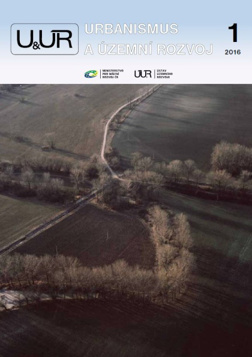
Mapping the secondary landscape structure for the needs of spatial and landscape planning, by Darek Lacina & Markéta Flekalová
The landscape is functional at three levels (structures): primary, secondary and tertiary. The current state of the landscape is represented by its secondary structure, both in terms of land use and land cover. The aims of our work were to develop a suitable method of depiction of the current state of landscape in regard to natural values, which can be used for the purpose of spatial and/or landscape planning, and to verify this method in the model territory of Vlčnov-Veletiny. Experience with other methods of landscape mapping was used as well. The outcome of the study is a proposal of ten categories of land cover. These categories are further segmented in sub-categories so that existing documents on biotope mapping can be used with the technology of geographic information systems.
Does landscape suffer from the Babylon syndrome? by Vladimír Mackovič
The polyfunctional character of the landscape requires a multi-disciplinary approach to solutions of concepts projected in the landscape. In connection with the process of planning, criticism is often heard to the effect that spatial planning does not deal with space comprehensively and contextually. An important condition for a rational landscape outcome is common understanding of concepts by all stakeholders. If the term landscape is only associated with its meaning as cultural image or mental abstract, there is no suitable aggregate expression for landscape as both environs and a cultural abstract. To answer the question in the title, landscape is, unfortunately, heading for a confusion of terms.
The concept of towns of good accessibility and its importance for the quality of the life of senior citizens and children in urban settings, by Zuzana Krmelová
The objective of the concept of towns of good accessibility is a sustainable relation among elements through which regular interaction takes place, so arranging for social cohesion and the elimination of effects of transportation on the environment. The article describes factors affecting accessibility as related to various age groups of inhabitants and focusing particularly on accessibility on foot as environment-friendly and an encouragement to physical activity.
Problems of the use of brownfields within the functional intra-urban structure of the city of Košice, by Ivana Sovišová & Slavomír Bucher
Although brownfields have originated throughout the administration territories of towns their spatial differentiation is of course unequal. In the city of Košice, most brownfield areas (38.5%) have been localized in the central urban zone, the Old Town. It is well known that the location of brownfield areas within a settlement plays an important role for further redevelopment. Four of Košice’s six brownfields, as listed in the category of reconstruction/revitalization under way or planned, are found in the administration unit of the Old Town.